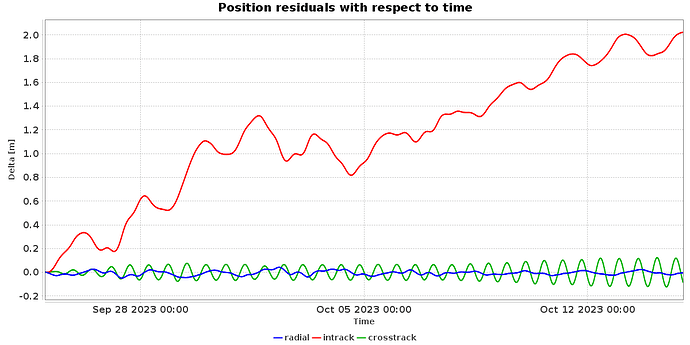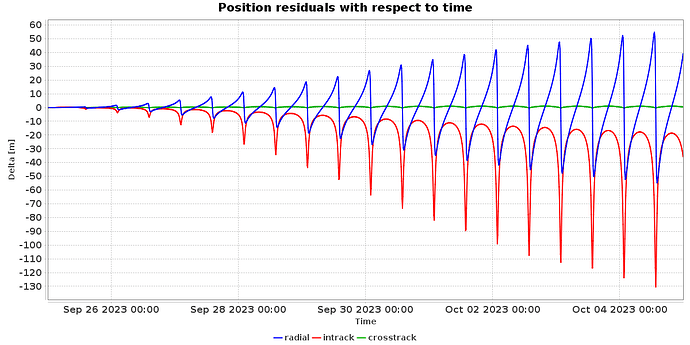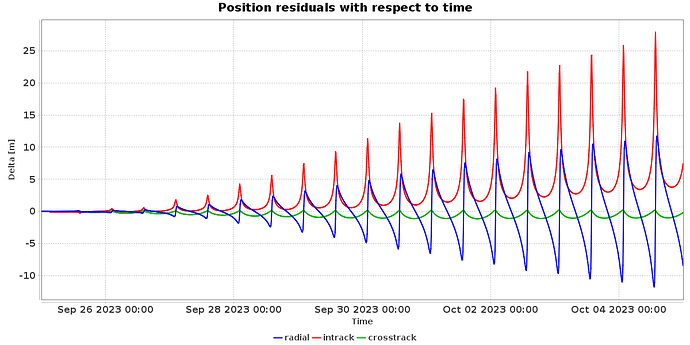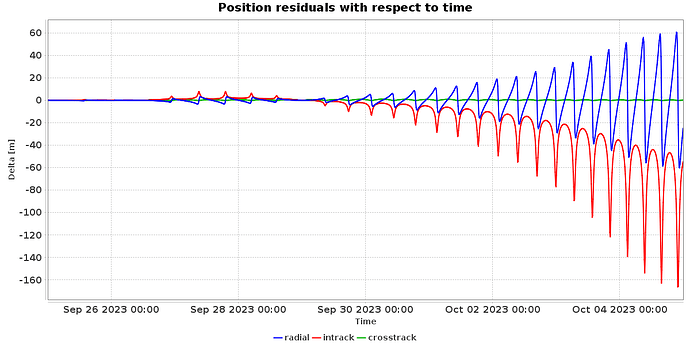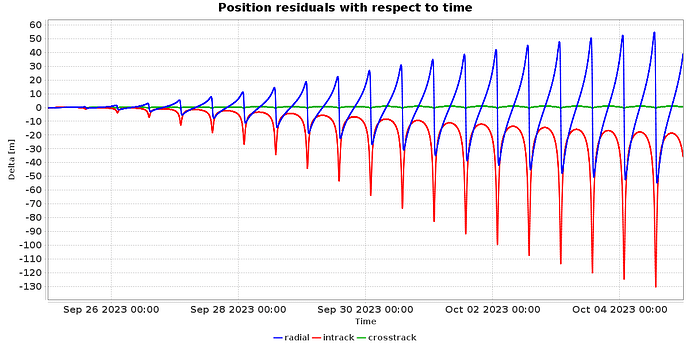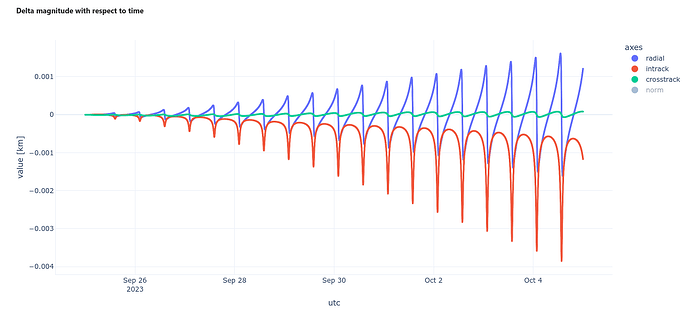We are trying to align Orekit propagator with respect to STK HPOP and we are having a hard time in matching the ocean tides.
We are running a 10 days propagation including only the ocean tides as a perturbation force in order to specifically see their effect. We ensure that we are using the same reference file to model the ocean tides. We use FES2014 model and we check that the coefficients in the fes2014-Cnm-Snm.dat file that we are using match exactly the ones that STK takes into consideration. We aligned the reference data as well (as in Earth Orientation Parameters, etc.). Also, we made sure to use the same degree and order (16x16) in both software.
We ran different tests for different orbital regimes. Clearly, according to the orbital regime, we obtain a more or less significant impact from the Ocean tides.
These are the deviations we are getting:
- LEO – Orekit propagation vs STK
- MEO – Orekit propagation vs STK
- HEO – Orekit propagation vs STK
We are very surprised by the difference we are getting on the HEO test case, in which we reach a maximum deviation in the order of 130m.
We read a warning comment in Orekit code dated 2013 stating that the Orekit implementation of the Ocean tides should be considered experimental. But 10 years have passed since, so we do not know if that is still applicable.
Also, focusing on the HEO case and comparing the propagation against a simple Keplerian one, we saw that the Orekit implementation drives the satellite in the opposite direction compared to STK.
- Keplerian vs Orekit propagation:
- Keplerian vs STK propagation:
This is the code snipped we use to instantiate the OceanTides force model:
ReferenceEllipsoid referenceEllipsoid = ReferenceEllipsoid.getIers2010(dataContext.getFrames().getITRF(IERSConventions.IERS_2010, true));
new OceanTides(
referenceEllipsoid.getBodyFrame(),
referenceEllipsoid.getEquatorialRadius(),
referenceEllipsoid.getGM(),
true,
OceanTides.DEFAULT_STEP,
OceanTides.DEFAULT_POINTS,
16,
16,
iersConventions,
ut1,
dataContext.getGravityFields());
How can we align the model with STK?

